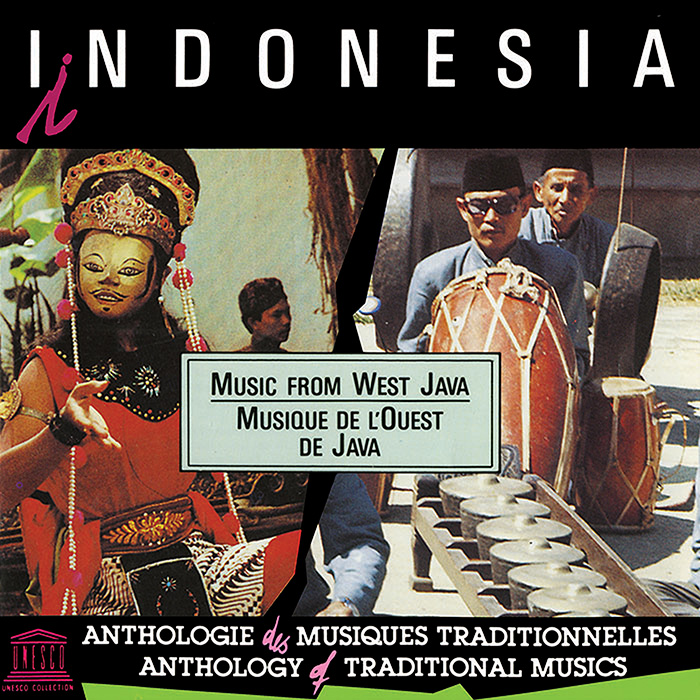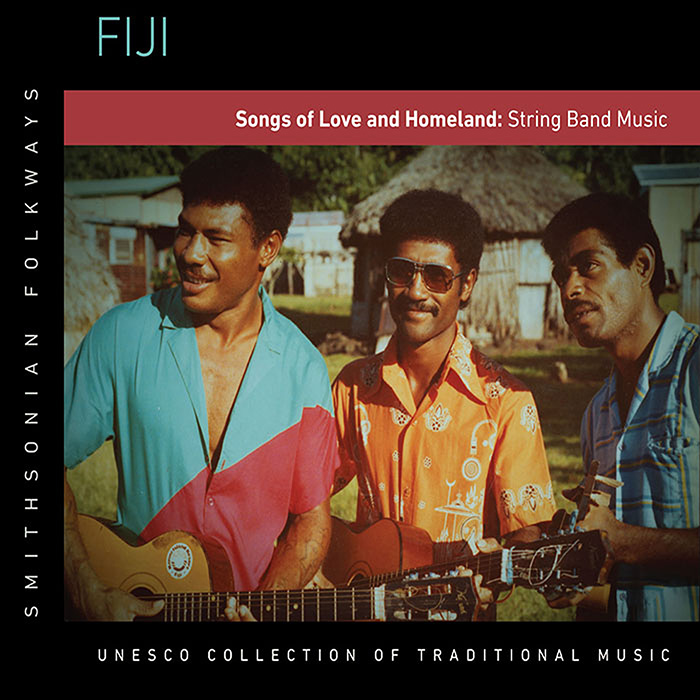-
UNESCO Collection Week 7: Music from Indonesia and Fiji
Week 7 of the UNESCO Collection of Traditional Music features traditional folk music of West Java and music of contemporary Fiji. Fiji: Songs of Love and Homeland – String Band Music is the second of twelve previously unreleased recordings made available as part of the UNESCO Collection project.
GUEST BLOG
By David Goldsworthy
The captivating sounds of traditional Southeast Asian bronze percussion ensembles and more modern music of voices, guitars, and ukuleles from the Pacific Ocean can be heard on this week’s albums from the UNESCO Collection of Traditional Music: Indonesia: Music from West Java, recorded and compiled by Jacques Brunet in 1970, and Fiji: Songs of Love and Homeland – String Band Music, recorded and compiled by myself in 1986.
Jacques Brunet, a well-known pianist and musicologist, recorded a series of traditional Southeast Asian music between 1963 and 1982. I am an ethnomusicologist whose recordings and research have focused on traditional and popular music of Indonesia and the Pacific.
The types of music on both albums, recorded 44 and 28 years ago respectively, can still be heard performed live in Indonesia and Fiji. The Indonesian album has six tracks of “traditional” instrumental music from West Java, mainly gamelan (percussion) ensemble music. This music is traditional in the sense that it “...is the result of an artistic activity which has been going on since the fifteenth century.”1 The Fiji album contains vocal music that dates back only to the 1920s and is influenced by Western popular styles. This music has maintained several features from indigenous Fijian traditions.
The Sundanese people of West Java have a culture that is somewhat distinct from that of neighboring Central Java. The Sundanese language is different from Javanese, and Sundanese music displays a forthright dynamic and lively quality of performance not often found in the more “refined” and laid-back (alus) Javanese approach. Sundanese people of West Java are also known in Indonesia for their sense of humor, which comes out in musical performances. The gamelan ensembles of West Java do share common features of instrumentation and musical structure with those of Central Java, but they usually have fewer instruments. Simon Cook compares the Sundanese and Central Javanese sounds, remarking: “Sundanese gamelan tend to have a clunkier, less sustained sound, more in keeping with the faster style of playing.”2 Sundanese music also uses two tunings not found in Central Java: the alluring pentatonic madenda and degung scales (heard in tracks 1 and 5 on this album).On Brunet’s album, you will hear gamelan music to accompany the traditional masked dances (tari topeng) and puppet theater (wayang golek) of West Java, as well as instrumental compositions for royal ceremonies. The first track is a type of “chamber” music for a flute and two zithers. You can see why the Sundanese are also known for the sadness of their music in the haunting beauty of this track.
Fijian musical culture embraces three main streams: traditional chant/dance (centered on the meke), Christian religious music, and popular music. This album focuses on popular music of Fijian villages known as “songs for bumping” (sere ni cumu), so called because the songs were often sung to accompany beer or kava drinking sessions where men would sit around clinking or bumping their cups or glasses together.Eight tracks of the Fiji album are by the same group: three young men singing in sweetly blended three-part harmony accompanied by acoustic guitars and ukulele. This village ensemble was keen for me to record their original songs and put out a CD, so I decided to feature them on this album. The rest of the songs on the album come from different villages on the islands of Taveuni and Kadavu.
Many of these popular songs are about love of people, nature, or homeland, but other topics include bereavement, politics and sport. Track 15 is about football and includes the English words “Never say die!” in otherwise Fijian-language lyrics. The songs are accompanied by acoustic instruments—guitars and ukuleles—but track 18 features an electric band. Songs usually have three or four vocal parts using the Western major scale. Strong bass singing can be heard on this album, as Fijians generally admire a prominent bass line.
 Playing the lali (slit drum). 1986.
Playing the lali (slit drum). 1986.Apart from obvious features derived from Western music, Fijian sere ni cumu do have some traditional aspects such as narrative texts full of poetic imagery and symbolism reminiscent of old chant styles, the employment of male falsetto, and the occasional use of traditional musical instruments such as the slit drum and stamping tubes to accompany the singing.
Besides the listening enjoyment provided by the delightful music on both albums, these recordings are also significant for their historical value as sonic documents of Indonesian and Fijian music genres performed in times past and present.
UNESCO Collection Week 7: Music from Indonesia and Fiji | Smithsonian Folkways Recordings



